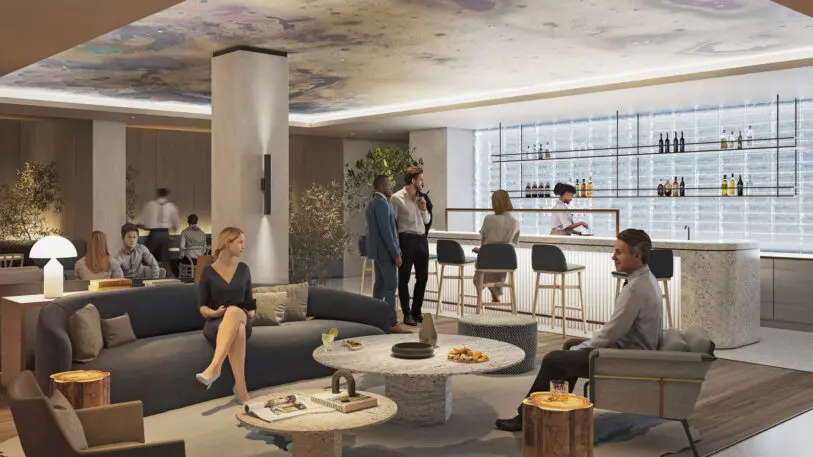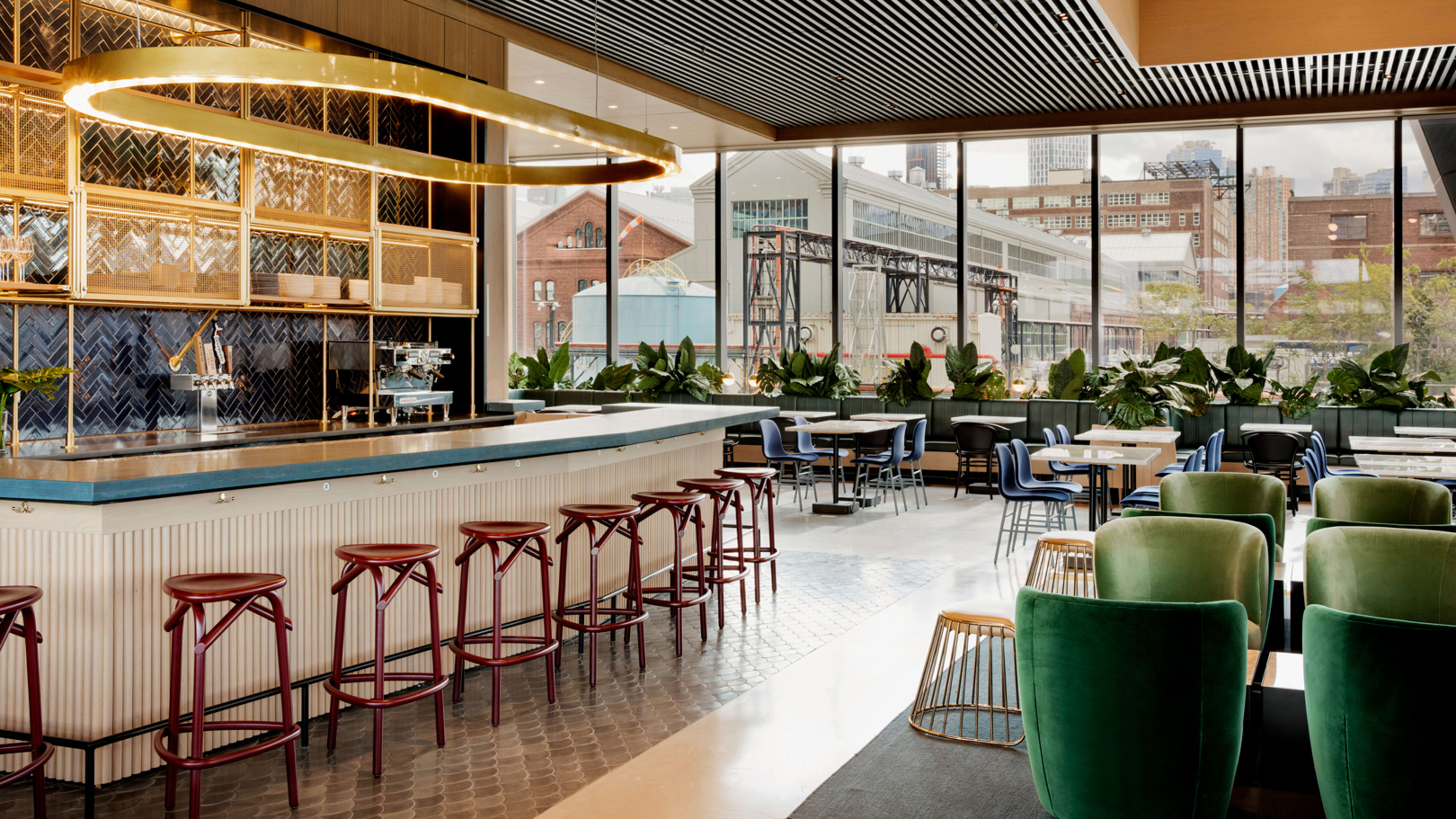It’s the end of a long day at the office–or perhaps the middle of an even longer day–and you need a drink. For most office workers in cities, there’s a solution not far away. Bars, the inventors of the post-work happy hour, are nearby, and people are often more than willing to make the trek. But what if even the corner bar is a little too far?
Some workers will have an even closer option. Office buildings are starting to be built with bars inside them. Whether event-focused, banquet-type spaces or regular buy-a-drink-at-the-bar bars, that much needed after-work drink can now be enjoyed without leaving the building.
Fogarty Finger, a New York-based architecture and interiors firm, has found itself turning more square footage inside office buildings into bars. “I’ve been doing commercial interiors for a couple of decades now, and I can say with confidence that that’s quite new,” says cofounder Robert Finger. “Offices have been allocating more area to alternative workspaces. It might be a library, it might be a lounge area, sometimes expanded food service areas, sometimes gaming.”
Finger says the trend is all about expanding the idea of what an office building can provide to workers–both in terms of leisure opportunities as well as new types of spaces where work, meetings, and team building can happen.

One example is the Newport Tower in Jersey City, a 36-story, mixed-use tower overlooking Midtown Manhattan. Originally built in the early 1990s, the building has just been renovated, and Fogarty Finger redesigned its second floor amenity space, including the building’s lobby, coworking and meeting spaces, a billiards room, and a large bar. There are Art Deco-inspired furnishings and fixtures, and cushy, low-slung furniture more common in a lounge. This is still an office space, with glass-walled conference rooms and meeting areas, but they all look out on the bar itself, turning what could be a lifeless meeting space into something with a pulse.
Finger says the bar was designed to break the silence of the typical office environment, with acoustic treatments that make the space louder and more lively–sort of like what one would expect walking into a bar. “A space with more of a buzz in it is already a different feeling, and you have a little bit more permission to be relaxed, to talk out loud, to laugh, to joke with each other,” Finger says. “All of that is a really important part of building teams and community and just getting away from your desk, frankly.”
“We’ll go as far as we can without it feeling unprofessional,” he says.

Building a bar into office buildings does raise some eyebrows. It may be seen as just another hyper-capitalist ploy to get workers to stay at work longer, hanging a cocktail on the end of a string while pushing the accelerator on an endless treadmill of work. And for employees less likely to use such an amenity–from those who don’t drink to parents (especially mothers) who have to get home right after clocking out—a bar for on-site socializing may feel inequitable.



And even on rough days, it’s not just about having a place to get a drink.
“In New York, you can still go down the street, but what I like is there’s still a sense of neighborhood,” Finger says. “If I were at the Navy Yard and I run into somebody I know who works at a different company, or I just meet somebody in the bar area but I know they work in the same building, that’s a different sense of community than if I meet them down the street.”
Recognize your brand’s excellence by applying to this year’s Brands That Matter Awards before the early-rate deadline, May 3.
